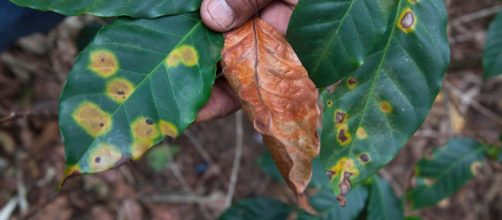colombia is the coffee capital of the world. But there is something that has been happening to the trees that would put the life of of its beans on halt. Researchers have been trying to find ways to combat Coffee Rust and ensure that the industry thrives well into the future.
Rusty beans
Coffee rust is a disease that comes from foreign materials being brought into Colombia. It can cripple the harvests or bring the whole industry to a stop. Colombia is the third largest coffee producer in the world and their exports were worth $2.4 billion last year according to BBC News.
For the last decades or so, researchers have been trying to find a way to combat the disease. The problem is whatever solution they develop, would it cause an effect in the taste of Colombian coffee?
When a plant is infected with coffee rust, the leaves turn a brownish-yellow color that when a fingernail scratches along the surface of the leaf, some of the brown comes off like rust on a pipe that has been exposed to the elements. If the tree is left untreated, it will lose all its leaves and the ability to produce any future beans. Sometimes some of the best ways to prevent the spread of the illness were to destroy the trees affected from the coffee rust disease, but even that affects the profit of the largest exported good throughout the world.
Colombia makes two types of coffee beans, the Arabica bean and the robust bean. The coffee rust disease attacks the Arabica bean rather than the robust bean because the robust tree has a resistance against the fungus. The robust may be cheaper to grow, but it only accounts for 37% of the coffee exported according to BBC.
Science hack
The ingenious solution to prevent the spread of coffee rust and continue exporting from Colombia meant that researchers have to breed both species together to get the best of the both worlds. A tree that has leaves resistant to the coffee rust disease and keeps the smooth flavor of the Arabica beans.
The Timor hybrid was found on the other side of the world located in India.
The hybrid was founded in 1927 but was not harvested until 1940, according to the BBC. The Timor hybrid does not taste great for coffee, but carries enough DNA that is similar to the DNA of the Arabica trees that the disease will no longer affect the plant. While it is expensive to make this type of hybrid, the result might reveal that the plant is capable to tune to coffee lovers taste with its sweetness and fruit flavor tones.


